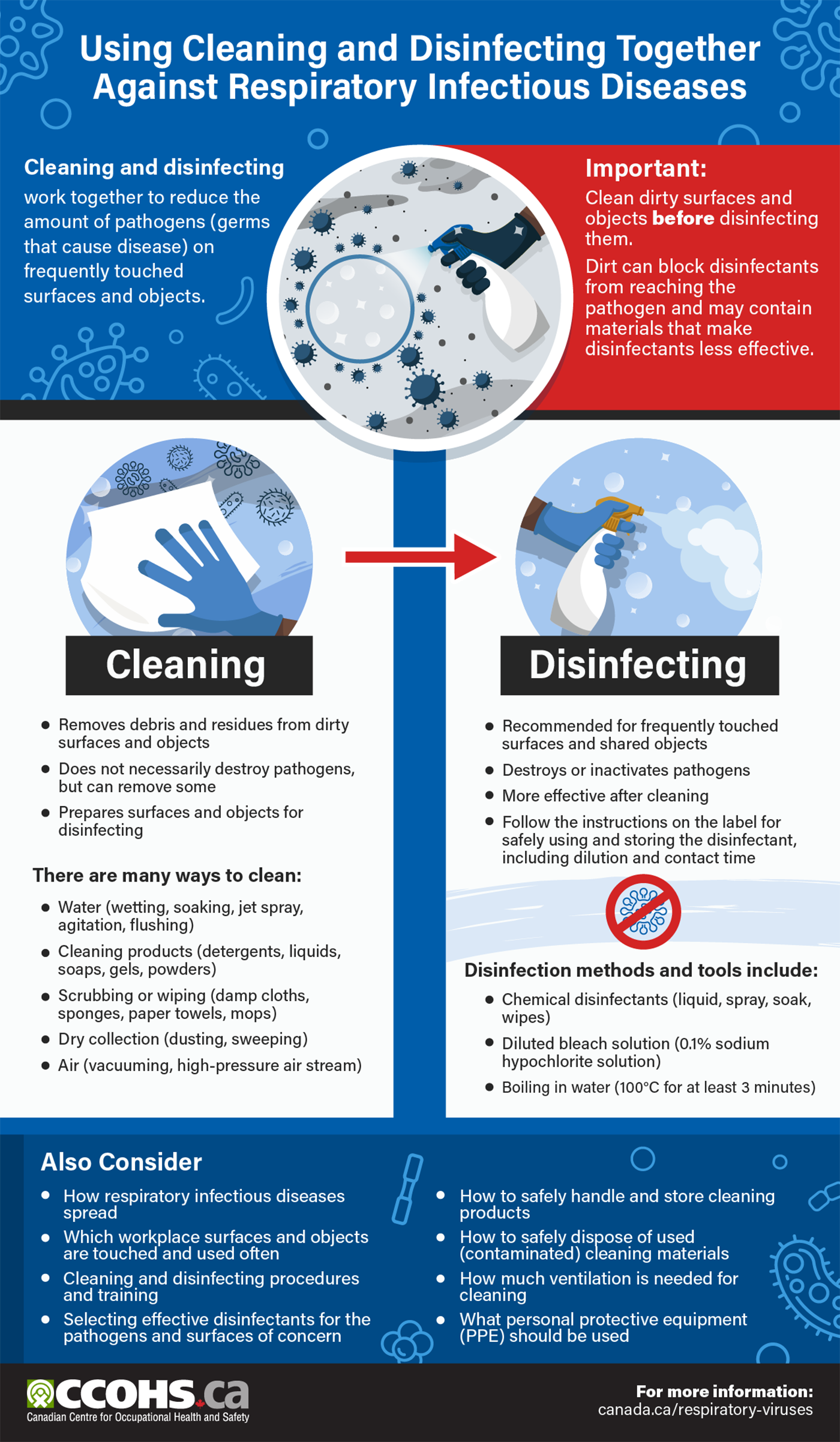Description: Using Cleaning and Disinfecting Together Against Respiratory Infectious Diseases
[PNG, 260 KB]

Description: Using Cleaning and Disinfecting
Together Against Respiratory Infectious Diseases
Cleaning and disinfecting work together to reduce the amount of pathogens (germs that cauuse disease) on frequently touched surfaces and objects.
Important: Clean dirty surfaces and objects before disinfecting them.
Dirt can block disinfectants from reaching the virus and may contain materials that make disinfectants less effective.
Cleaning
- Removes debris and residues from dirty surfaces and objects
- Does not necessarily destroy the virus, but can remove some
- Prepares surfaces and objects for disinfecting
There are many ways to clean:
- Water (wetting, soaking, jet spray, agitation, flushing)
- Cleaning products (detergents, liquids, soaps, gels, powders)
- Scrubbing or wiping (damp cloths, sponges, paper towels)
- Dry collection (dusting, sweeping)
- Air (vacuuming, high-pressure air stream)
Disinfecting
- Recommended for frequently touched surfaces and shared objects
- Destroys most of the virus
- More effective after cleaning
- Follow the instructions on the label for safely using and storing the disinfectant, including dilution and contact time
Disinfection methods and tools include:
- Chemical disinfectants (liquid, spray, soak, wipes)
- Diluted bleach solution (0.1% sodium hypochlorite solution)
- Boiling in water (100°C for at least 3 minutes)
Also Consider
- How respiratory infectious diseases spread
- Which workplace surfaces and objects are touched and used often
- Cleaning and disinfecting procedures and training
- Selecting effective disinfectants for the pathogens and surfaces of concern
- How to safely handle and store cleaning products
- How to safely dispose of used (contaminated) cleaning materials
- How much ventilation is needed for cleaning
- What personal protective equipment (PPE) should be used
For more information: canada.ca/respiratory-viruses.
Document last updated on: 2023-09-11

